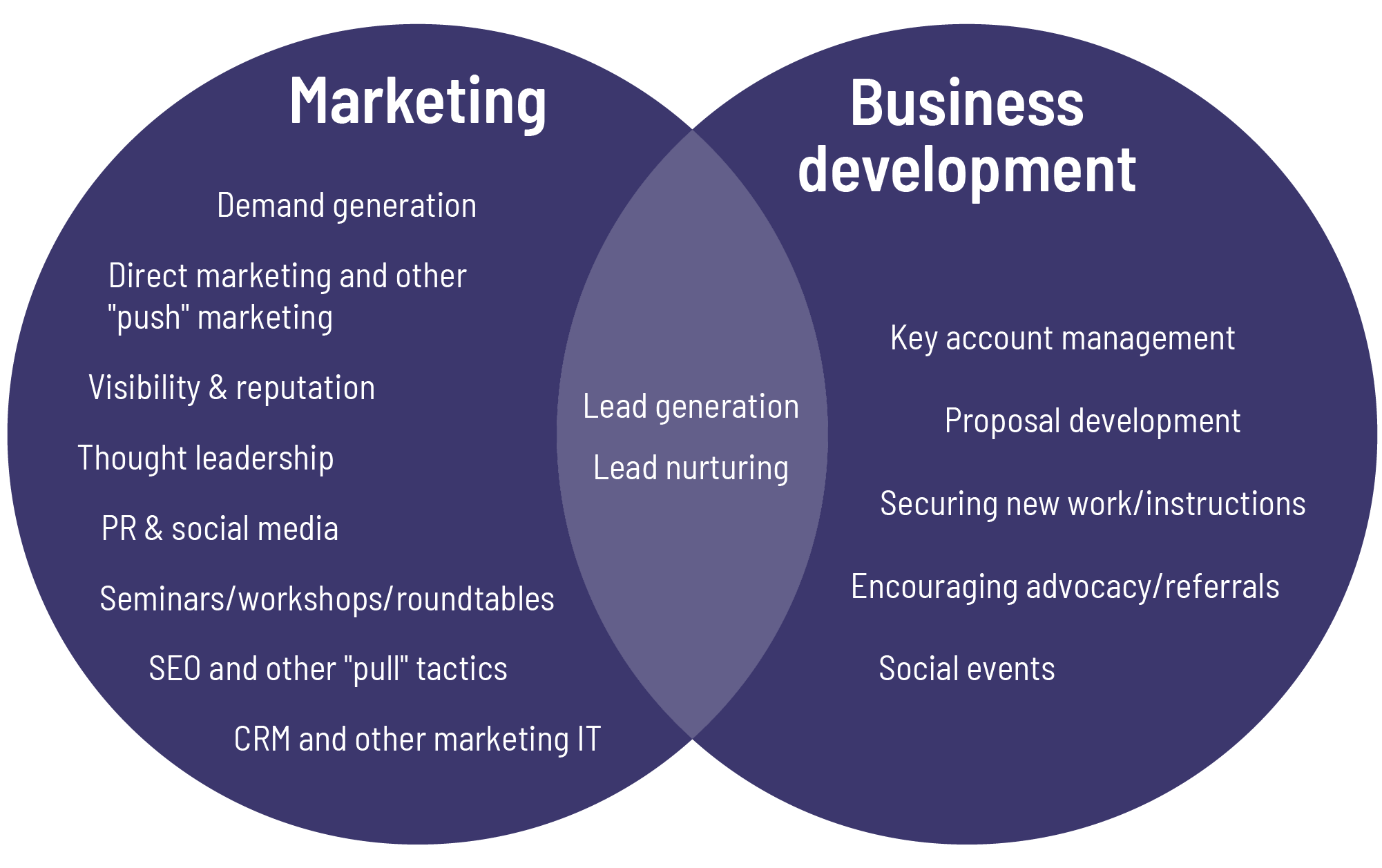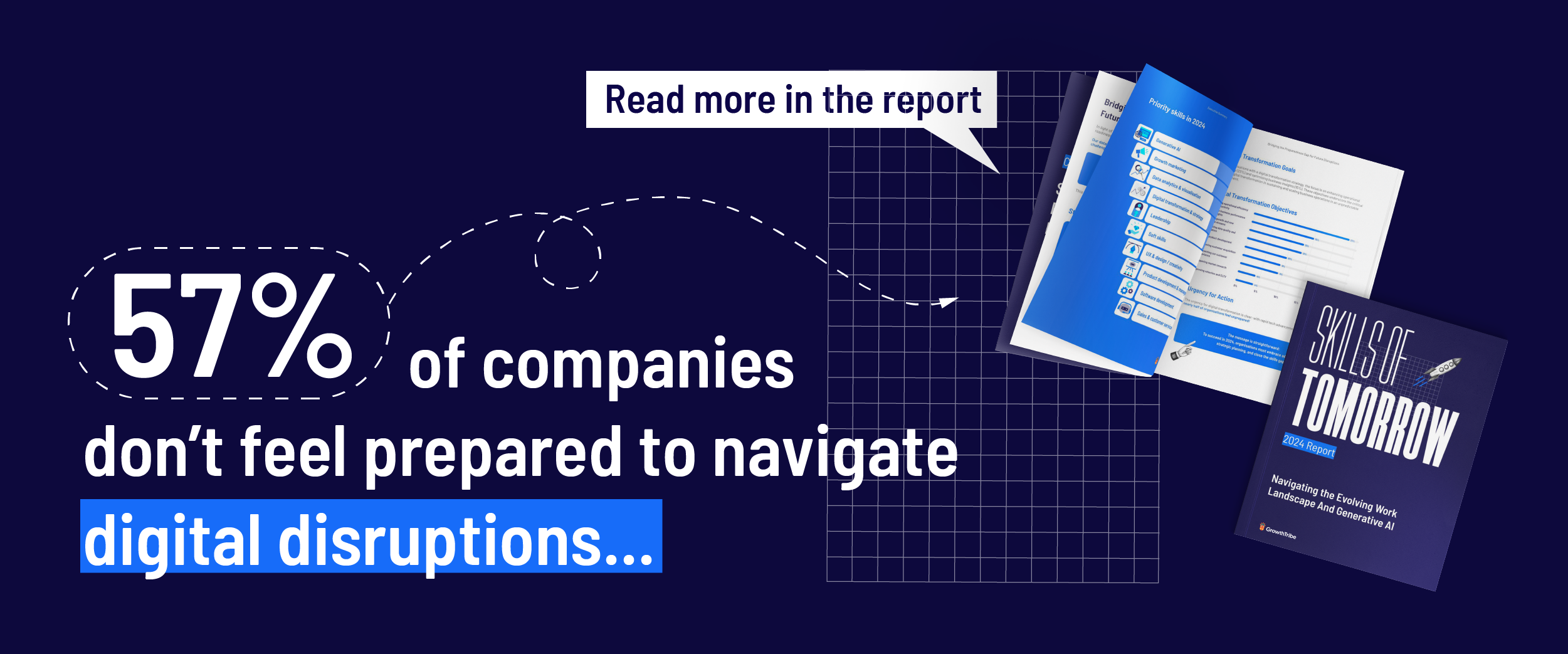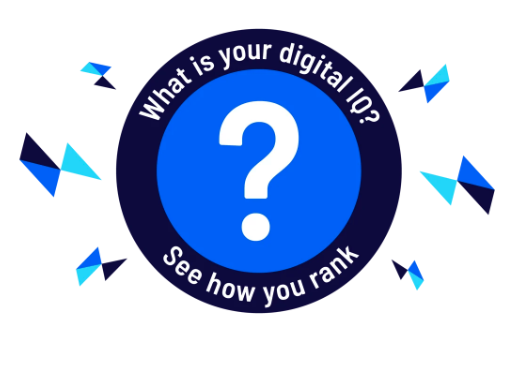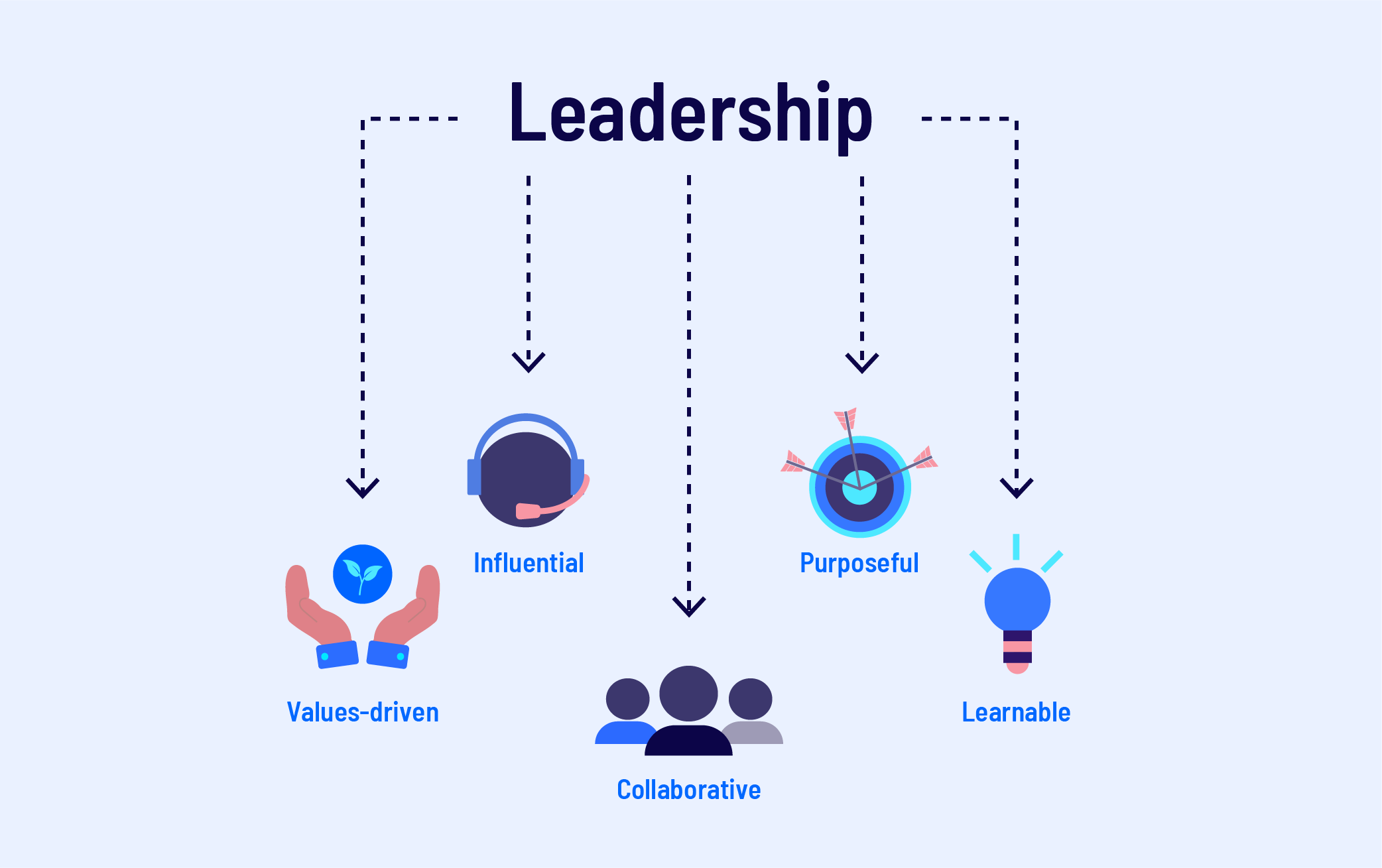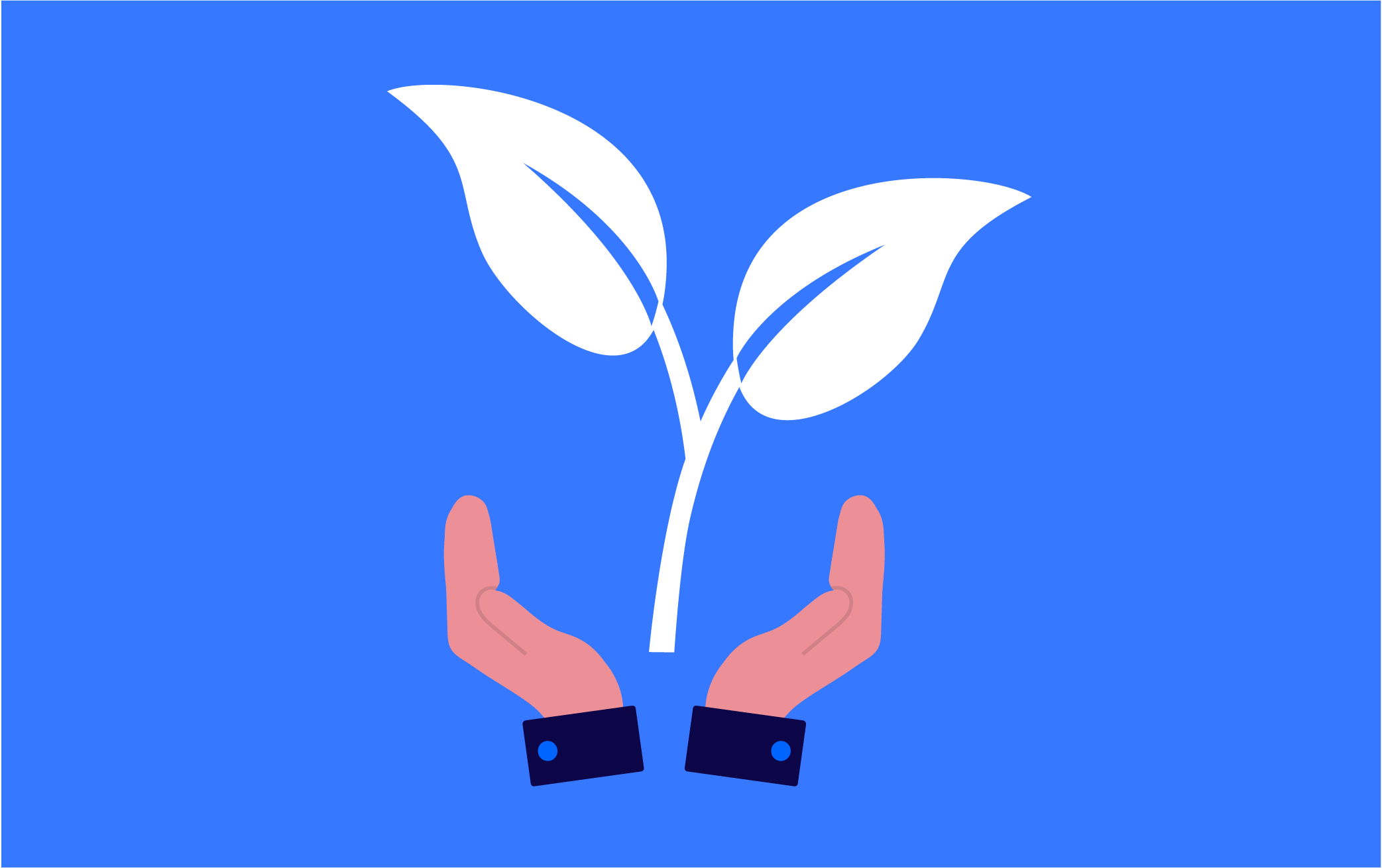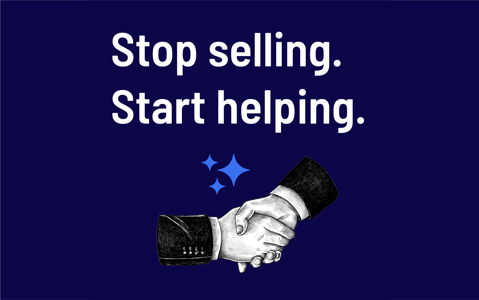
What exactly is business development, and how does it differ from marketing and sales? In this comprehensive guide, we'll dive into the intricacies of business development, exploring its role as the engine of organizational growth.
We'll provide actionable strategies to enhance your business development efforts, from prioritising relationship-building to leveraging marketing automation.
We'll take a look at
- What is business development?
- What is the difference between marketing & business development?
- What is the difference between sales & business development?
- How to improve your business development
- What are the responsibilities of a BDR?
Key takeaways
- Implement Effective Strategies: Take actionable steps such as prioritising relationship-building, leveraging marketing automation, adopting consultative selling techniques, offering free demos, and implementing account-based marketing to elevate your business development efforts and drive tangible results.
-
Drive Sustainable Growth: Utilise business development as the engine to propel sustained momentum and create lasting value through customer-centric approaches and nurturing positive relationships.
-
Enhance Sales and Marketing: Differentiate business development from sales and marketing by leveraging its unique ability to enhance the sales funnel and amplify marketing efforts through targeted and strategic initiatives.
-
Forge Powerful Connections: Recognise the integral role of business development in building bridges between your brand and its audience, fostering meaningful connections that drive engagement and loyalty.
-
Optimize Sales Success: Equip your sales team for success by laying the groundwork through effective business development strategies, ensuring seamless transitions from lead generation to conversion and beyond.
Alright, let's jump right into it! 👇
What is Business Development?
With opinions flying in all directions, it's a bit like watching physicists debate the cosmos, isn't it?
Someone with successful business development skills is the engine that propels your organisation forward, not just in fits and starts but with sustained momentum.
It's about creating lasting value from the alchemy of customers, markets, and positive relationships.
Now, you might hear your start-up buddies tossing around the term "hustling" when they talk about a business development team. But let's delve deeper beyond the buzzwords and into the heart of the matter.
At its core, business development is your growth motor. It's the strategic roadmap that guides you in identifying, nurturing, and seizing new opportunities to grow your company.
Forbes simplifies it nicely, defining business development as:
Business development is the creation of long-term value for an organisation from customers, markets, and strong relationships.
❌ It's not a sales plan, yet it enhances the sales funnel.
❌ It's not marketing, but it amplifies marketing efforts.
So, what sets business development apart?
Let's take a look at the difference between marketing & business development 👇🏼
What is the difference between marketing & business development?
It's like trying to distinguish between two sides of the same coin, each essential in its own right but serving distinct purposes in the grand scheme of things.
Let's start with marketing - the maestro behind crafting your company's identity and amplifying its voice in the cacophony of the marketplace.
Marketing is all about strategy, pinpointing your unique offerings and showcasing them to the world in a way that makes heads turn and hearts race.
On the flip side, we have business development, the unsung hero quietly forging connections and opening doors to new opportunities.
While marketing sets the stage, business developers take centre stage, building upon the foundation laid by marketing efforts to cultivate meaningful relationships with customers, potential clients and partners.
Companies that use BDRs convert 40% of the leads they create into sales opportunities, compared to companies that pass leads directly to sales reps, which have only a 5% conversion.
Picture business developers as the master networkers, shaking hands and exchanging business cards at networking events, all with the ultimate goal of turning qualified leads into loyal customers.
It's the bridge that spans the gap between your brand and its audience, transforming prospects into valued patrons through the finesse of your effective sales strategy.
So, what's the key difference between the two?
Marketing is about crafting your company's story and shouting it from the rooftops, while business development is about forging the connections that bring that story to life.
Together, marketing and business development form a dynamic duo, each playing a crucial role in driving your company forward on the path to success.
So, whether you're polishing your marketing strategy or honing your business development skills.
Remember: the synergy between the two is the secret sauce that fuels growth and prosperity.
What is the difference between sales & business development?
Both are vital to the growth of your company. Each has a distinct role in the grand production of business success.
Let's unravel this enigma, shall we?
First off, we have business development representatives (BDRs) and sales development representatives (SDRs), often seen as two peas in a pod.
These roles are akin to detectives, scouring the landscape for promising leads and ushering them down the sales pipeline.
While some companies blur the lines between the two, the crux of the matter lies in their approach to leads - inbound versus outbound.
Picture BDRs as intrepid explorers venturing into uncharted territories, tasked with prospecting cold leads and opening doors to new opportunities.
They're the architects of outreach campaigns, laying the groundwork for potential relationships with prospective clients.
On the flip side, SDRs are the discerning gatekeepers, sifting through warm leads with a keen eye for potential.
Their focus lies in qualifying leads that have already shown interest, nurturing them along the path to conversion with finesse and precision.
Is that it?
No! 👇
Business development is about laying the groundwork for sales success, setting the stage for the sales team to work their magic.
Sales executives are the closers.
Armed with a deep understanding of the prospective customer's needs and armed with solutions, they guide prospects through the buying journey with confidence and expertise.
So, what's the bottom line?
A business development plan paves the way for sales, laying the foundation for fruitful relationships and opening doors to new possibilities.
Sales, on the other hand, seals the deal, turning leads into loyal customers with a winning combination of charm and persuasion.
Together, they form a dynamic duo, each playing a crucial role in driving your company's growth and success.
So whether you're prospecting cold leads or nurturing warm ones.
How to improve your Business Development?
Here we'll jump into only a few tips to improve your business development process for 2024.
- Stop cold calling
- Marketing automation for prospects and leads
- Stop selling - start helping
- Offer free demos
- Account-based marketing
Alright, let's jump into it.
1. Stop cold calling
Stop Cold Calling and embrace Relationship Building!
Gone are the days when cold calling was the golden ticket to sales success. In today's world, bombarding potential customers with unsolicited calls is not just ineffective; it's downright counterproductive.
Think about it: how many times have you received a random call from a salesperson, only to be met with annoyance and frustration?
Exactly.
There's a better way to connect with prospects and build meaningful relationships: networking.
Instead of dialling numbers at random, focus on establishing genuine connections with your target audience.
One powerful avenue for networking is attending industry conferences, trade shows, and events. These gatherings provide invaluable opportunities to meet potential clients face-to-face, fostering trust and rapport in a way that cold calls never could.
But networking isn't confined to physical events. In today's digital age, platforms like LinkedIn offer a treasure trove of prospects waiting to be discovered.
Leverage your online networks to identify and engage with potential customers who have already shown interest in your industry or offerings.
Or
Embrace inbound marketing tactics to attract leads organically. By offering valuable content, personalised messaging, and targeted outreach, you can position yourself as a trusted advisor rather than a pushy salesperson.
Successful business development is about building bridges, not burning them.
So, before you pick up the phone to make another cold call, ask yourself: Is there a better way to connect with this prospect?
Chances are, the answer lies in relationship building, not cold calling.
2. Marketing automation for prospects and leads
In the fast-paced world of business development, nurturing prospects and leads is paramount to success.
But with the sheer volume of data and tasks at hand, it's easy to feel overwhelmed.
That's where marketing automation swoops in to save the day, streamlining your workflow and supercharging your efforts.
Traditionally, lead nurturing has been a manual sales process, requiring painstaking attention to detail and a hefty dose of human effort.
But with marketing automation software at your fingertips, you can harness the power of data to create personalised workflows that resonate with your audience on a whole new level.
Every interaction your prospects have with your brand - whether it's opening an email, visiting your website, or downloading a resource - becomes a valuable data point.
Marketing automation software transforms this wealth of information into actionable insights, allowing you to tailor your messaging and content to address each prospect's specific needs and pain points.
It's about creating a seamless, cohesive experience for your prospects as they journey from awareness to conversion and beyond.
One of the key benefits of marketing automation is its ability to personalize workflows based on individual behaviours and preferences.
By leveraging data-driven insights, you can deliver the right content to the right person at the right time, nurturing leads into warm prospects and eventually loyal customers.
Marketing automation streamlines processes across your entire organisation, breaking down silos and fostering collaboration.
With centralised data storage and automated workflows, you can ensure a unified customer experience from the very first touchpoint to post-purchase support.
Imagine a world where every interaction with your brand feels tailored to the individual, where a business development process flows seamlessly from one stage to the next, and where customer satisfaction reigns supreme.
That's the power of marketing automation - transforming prospects into loyal advocates and driving sustainable growth for your business.
Not sure what skills your team needs in to fuel exponential growth with automated marketing processes?
Download our Skills of Tomorrow report with the latest 2024 trends around the most in-demand digital skills.
3. Stop selling - start helping (consultative selling)
Consultative selling isn't just a sales technique - it's a mindset.
At its core, it's about putting the customer front and centre, prioritising their needs, challenges, and goals above all else.
This means shifting the conversation away from product features and towards a deep understanding of the customer's unique situation.
First introduced by Mack Hanan in the 1970s, consultative selling has experienced a resurgence in recent years, becoming a staple in sales strategies across industries.
Whether you're selling cars or crafting copy, the principles of consultative selling can be applied with remarkable effectiveness.
So, what sets consultative selling apart from traditional sales approaches?
It's all about perspective. Instead of viewing yourself as a salesperson pushing a product, you position yourself as a trusted advisor, guiding the customer through their decision-making process with empathy and insight.
In the initial stages of the sales journey, your focus isn't on making a sale - it's on building a relationship.
Listen to the customer's challenges and aspirations.
Consultative selling isn't just about building rapport; it's about providing tailored solutions to meet the customer's needs.
Reframe the conversation around problem-solving rather than product-pushing.
Prioritise the customer relationship and focus on solving their problems to create stronger buyer-seller relationships, and ultimately, sustainable business growth.
At its essence, consultative selling is about fostering meaningful connections and driving mutual success.
So, whether you're engaging with B2C or B2B clients,
Remember: in the world of consultative selling, the customer always comes first.
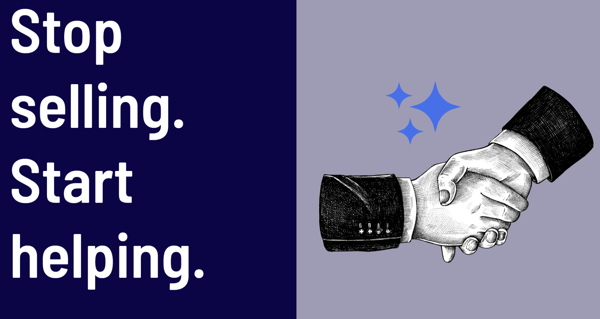
4. Offer to try out your product/service for free
In the realm of business development, there's perhaps no greater allure than the promise of trying out a product or service for free.
Offering free trials and sales demos not only entices potential customers but also provides invaluable opportunities to showcase the value of what you have to offer.
Imagine being able to show your prospects firsthand how your product or service can address their specific challenges.
That's the power of a well-executed sales demo.
Whether conducted in person, over email, on your website, or via video chat, a tailored sales demo puts your offering front and centre, allowing prospects to see its capabilities in action.
Make sure it's personalised!
Each sales demo should be meticulously crafted to resonate with the individual needs and pain points of your prospect.
By showcasing how your solution can solve their challenges, you're not just pitching a product - you're offering a tailored solution to their unique problems.
Want to try out our online learning platform?
5. Account-based marketing (ABM)
This powerful approach involves both sales and marketing teams collaboratively engaging specific target accounts, transforming them from prospects into loyal customers.
At its core, ABM is a laser-focused strategy that targets specific, high-value prospects with tailored marketing and sales initiatives.
Unlike traditional inbound strategies that cast a wide net, ABM hones in on individual organizations or accounts, treating each as a unique entity deserving of personalized attention.
This approach requires close collaboration between sales and marketing teams, aligning their efforts to create cohesive, account-based experiences.
Together, they select key accounts, develop shared business development strategies, and execute targeted campaigns designed to resonate with decision-makers within those organizations.
In today's hyper-competitive landscape, consistency is key to fostering customer loyalty and trust.
ABM strategies excel in delivering consistent, reliable experiences across all touchpoints, ensuring that prospects receive cohesive messaging and support throughout their journey.
Account-based marketing is not just a strategy; it's a mindset shift that empowers businesses to focus their efforts where they matter most.
What are the responsibilities of a BDR?
The role of a Business Development Representative is very diverse!
To be honest, everything a BDR does starts with research.
A BDR should be able to create successful business development strategies for the company’s future, a BDR needs to do thorough research into:
- Competitors
- Leads
- Prospects
- Customer base
- Company History
- Market and industry trends
- Product development
An up-to-date knowledge base is essential for the success of any BDR.
Let's take a look at the 3 important responsibilities of a Business Development Representative. 👇
1. Lead qualification
In the intricate world of business development, one of the core responsibilities of Business Development Representatives (BDRs) lies in lead qualification - a process that serves as the foundation for successful sales endeavours.
Usually, leads are qualified through calls, web forms, emails, and social media.
Remember, lead qualification isn't just about sorting through a list of prospects - it's about identifying the diamonds in the rough, the leads with the highest potential to convert into loyal customers.
The goal is to identify the needs in order to best serve your prospects.
The benefits of lead qualification are manifold.
It enhances the effectiveness of sales pitches by tailoring them to the specific needs and pain points of each prospect.
Moreover, lead qualification fosters more accurate sales forecasting and improves overall sales conversion rates, driving sustainable growth for the business.
One classic framework that guides lead qualification is BANT:
- Budget: What is the budget the prospects can allocate to your solution?
- Authority: How much authority does your contact have to make a purchase decision?
- Need: Is there an active/ongoing need that your product can solve?
- Timeline: How important is it to solve the business challenge and before when does your prospect need to make a decision?
Under the BANT framework, a lead is considered qualified if they meet three of the four criteria. While BANT is particularly well-suited for B2B environments, it offers valuable insights into lead quality and potential conversion.
Advantages of BANT include its simplicity and efficiency in quickly disqualifying leads that don't meet the predefined criteria, thus streamlining the sales cycle.
However, critics argue that BANT may oversimplify lead qualification and prematurely disqualify prospects who could become valuable long-term customers.
In essence, lead qualification efforts should guide BDRs in identifying high-value prospects and driving meaningful interactions.
By embracing proven frameworks like BANT and prioritising personalised engagement, BDRs can navigate the complexities of lead qualification with confidence, ultimately propelling the business towards greater success.
2. Constant hunt for new business opportunities
An important business Development goal is to play a pivotal role in leveraging their expertise to identify potential avenues for financial growth across product lines, markets, prospects, and brand awareness.
Embracing a proactive approach to seeking new opportunities is essential for sustaining and accelerating business growth opportunities.
In a competitive marketplace, businesses must continually innovate and explore untapped markets to stay ahead of the curve.
By actively networking, researching competitors, and engaging with prospects and customers, BDRs uncover valuable insights that can drive strategic decision-making and fuel expansion initiatives.
When a new business opportunity arises, BDRs play a vital role in facilitating collaborative assessment and discovery processes.
Sales representatives often find themselves juggling multiple tasks, ranging from prospecting and lead nurturing to client satisfaction and deal closure.
However, these diverse responsibilities can strain their effectiveness and impede revenue generation efforts.
By offloading time-intensive tasks to dedicated BDRs, sales teams can focus their efforts on high-impact activities, maximizing their efficiency and driving tangible results for the business.
In essence, BDRs serve as navigators, guiding businesses through the ever-changing landscape of opportunities for growth.
By proactively seeking new business opportunities, facilitating collaborative assessments, optimising the efficiency of the sales department, and navigating the business development process, BDRs empower organisations to unlock their full potential and achieve sustainable growth strategies in a competitive marketplace.
With their strategic expertise and relentless pursuit of opportunity, BDRs drive innovation, foster expansion, and propel businesses towards greater success.
👏👏👏 To all the BDRs!
3. Keep track of updates in the market
Just like a vigilant superhero keeps an eye on the city for signs of trouble, staying updated on market trends, competitor strategies, and industry shifts is crucial for steering your business towards success.
By understanding your competition's strategies, products, and target audience, you can tailor your approach to attract the right leads and seize new opportunities as they arise.
Change is the only constant.
By being the first to understand the latest market updates and industry trends, you equip your business with the foresight to anticipate shifts and adapt your strategies accordingly.
Keeping track of market updates isn't just a chore—it's an adventure waiting to unfold.
Approach it with curiosity and enthusiasm, knowing that each new piece of information brings you one step closer to achieving your business goals.
Conclusion
Business development serves as the engine of organisational growth, propelled by the creation of long-term value from customers, markets, and relationships.
While often misunderstood, it stands distinct from sales and marketing, acting as a strategic roadmap to identify and seize new opportunities.
It involves embracing consultative selling, offering personalized experiences, and leveraging marketing automation.
Business Development Representatives play a critical role in lead qualification, hunting for new opportunities, and staying abreast of market updates.
The synergy between sales, marketing, and business development forms the secret sauce that fuels company growth and prosperity.
Therefore, businesses must prioritise building meaningful relationships and delivering tailored solutions to drive sustainable success in a competitive marketplace.
Categories
- Business & Innovation (72)
- Growth & Marketing (58)
- Data & Analytics (27)
- UX Design (13)
- Alumni Stories (11)
Related articles
Latest articles
Boost your Revenue Growth using LinkedIn Social Selling
In a digital age where connections mean everything, leveraging...
The Power of Collaboration: Enhancing Team Performance Tactics
As organisations navigate complex challenges and strive for...
The Ultimate guide to boost organic growth in 2024
Imagine organic growth as the business equivalent of sculpting...
The best 2024 Business Development Guide
What exactly is business development, and how does it differ from...




